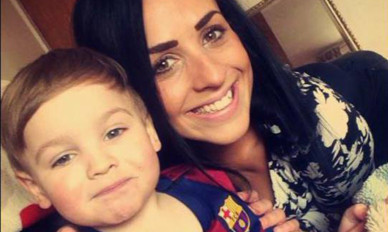The family of a Tayside toddler found after being locked in his home with the body of his dead mother for days is urging parents to teach their children how to dial 999.
Three-year-old Mason Martin’s mum, Lydia MacDonald, 28, died after suffering an asthma attack in June at her home in Lickley Court in Perth.
Lydia’s parents, Linda and Ron MacDonald, now look after Mason and have taught him why and how to call the police with his new address, in case there is another emergency in the future.
Linda, 58, said: “Our daughter died of asthma in her sleep and her son, Mason, who had only just turned three, was left with her.
“My beautiful grandson, not knowing what to do, didn’t know how to get help.
“Now I am proud to say that Mason can dial 999 and he knows his address.
“We have taught him if nana or grandad are hurt that he must dial 999.”
Linda insisted parents should make it a priority to teach their children how to call the police, as it could save someone’s life.
She said: “It’s not just useful if a health issue arises, but what if the child’s mum falls down the stairs and hurts her head?
“An older child say, an eight-year-old can just open the front door, run outside and ask for help. But a younger child might not know what is going on or understand the severity of it.
“A toddler might not know their numbers or be able to count to 10. However, if you just teach the number nine and make them learn their address, then that’s all you need.
“Even if a child doesn’t know their address, the police can trace where a call is coming from these days.”
Linda believes that dialling 999 is something that is taught in schools, but said she thinks that is not enough and the lesson should be rolled out at nurseries as well.
She added: “Children are taught road safety when to cross a road and that they should never talk to strangers so I don’t see why calling 999 doesn’t become as important as one of those lessons.
“I thought it was good that my children knew how to call the police 25 years ago and I still think that it’s important today.”
